On 14th April 1912 the RMS Titanic hit an iceberg on its maiden voyage. In the early hours of 15th April, the ship sank. With reporting as it was, it would take another day before the headlines would hit on April 16th, and as this newspaper from the time shows, the first reports weren’t all that accurate.
I’ve been collecting newspapers from historical events for years, a hobby all my friends think is slightly crazy. A few years ago I managed to obtain a full copy (Sealed Orders was favourite in the first race at Newmarket) of the Daily Mirror, dated 16th April 1912, the first day of reporting after the Titanic disaster.
The paper cost One Halfpenny at the time of sale, and reading it with what we know about the disaster today, it’s about all it was worth in terms of real, factual news. As we see below, the disaster unsurprisingly took full front page, and the headline ‘Disaster to the Titanic: World’s Largest Ship Collides with an Iceberg in the Atlantic During Her Maiden Voyage’ is at least correct. The caption below tells how wireless has been used to call assistance for the boat, which has struck an iceberg off Newfoundland Banks.
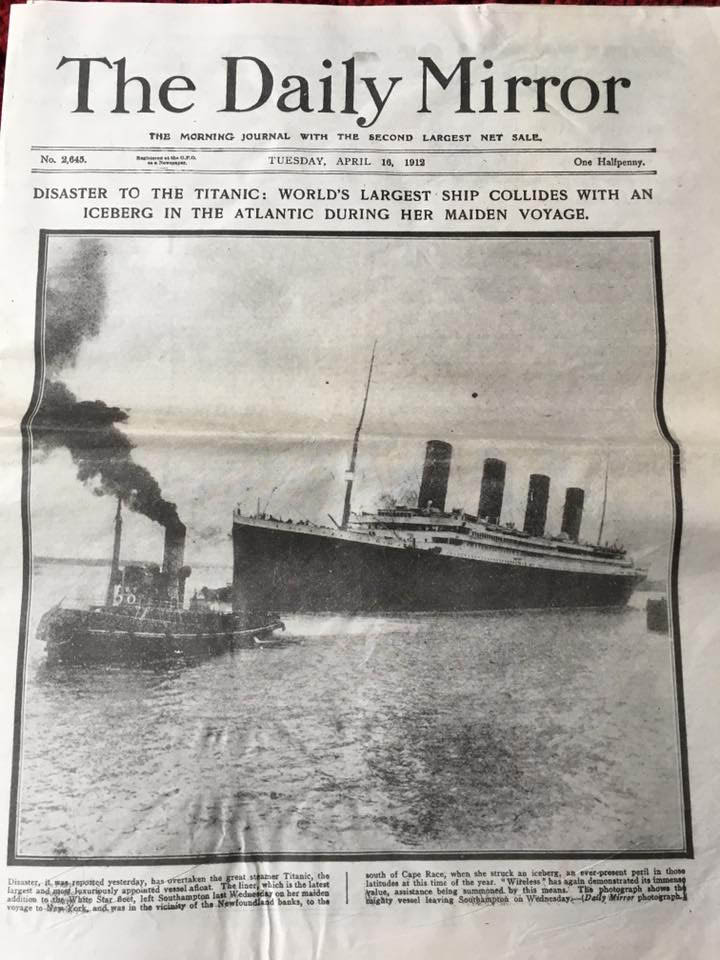
Any readers with friends or family aboard the Titanic might have breathed a sigh of relief upon turning to page two. As you can see the headline across the top reads ‘Everyone on board world’s greatest liner safe after collision with iceberg in Atlantic Ocean’. From here the entire page is given over to accounts and reports on the state of the ship. The first column gives accounts of how passengers have been taken off the ship as it’s towed back to port, it then continues to report how no lives are in danger and by wonder of wireless news has got back to port.
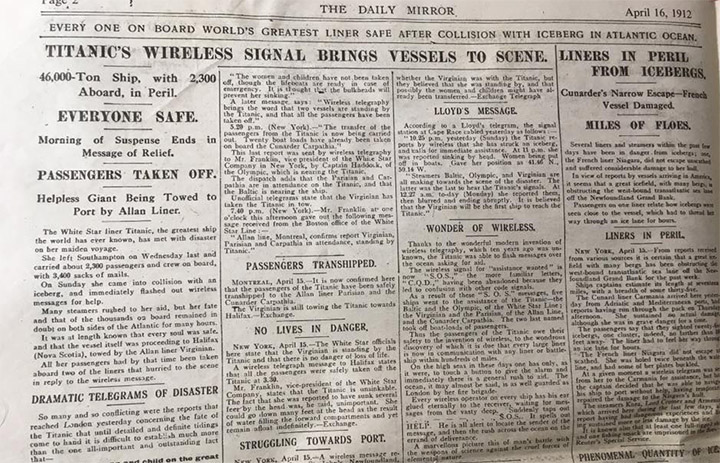
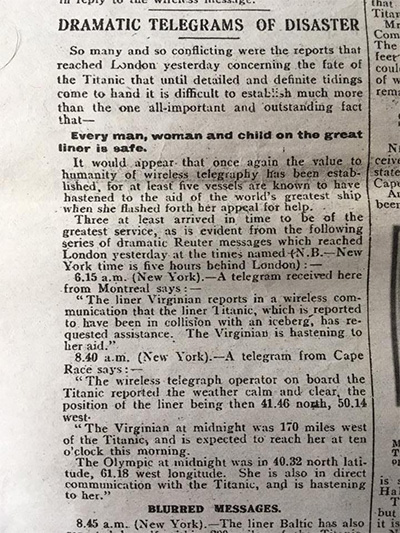
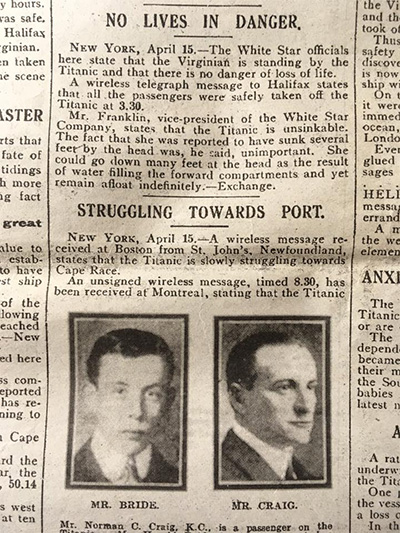
Page three is completely given over to the wonders of the RMS Titanic, the workmanship, the cost of building and the sheer lavishness of the project. We hear of the passengers (and fine arts) on board, the details of the boat and the captain and even a rundown of the ship’s menu. The centre pages, and final feature on the tragedy is a portrait of images, of the ship, its captain and notable passengers on board.
Anyone reading the newspaper that day, desperate for news would have felt very reassured, even those awaiting third class passengers, most of whom were already dead, the ship already sunk.
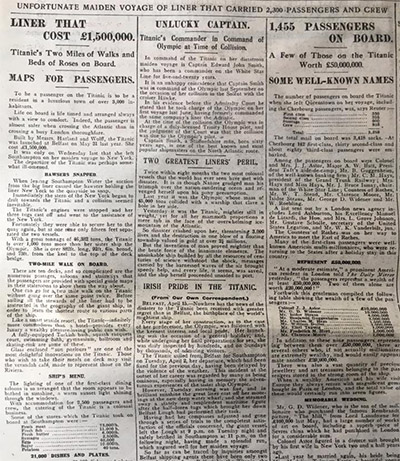

Of course, as we know today, and as people would know in a few days then, is that fewer than half of those on board survived and the Titanic never made it to Cape Race, remaining in its watery grave today. The newspaper does though give a fascinating insight into how slow news travelled one hundred years ago, and how the media through the ages has been filling in the gaps for things it doesn’t yet know. Whether the false reporting was caused by slow news, or whether there was pressure by the wealthy shipmakers is unknown, but the paper stands as an interesting document all the same.
If you’re left wanting to know more about the disaster, here are 5 nonfiction books on the sinking of the Titanic that I would recommend.

10 of 2024’s Most Anticipated Reads

The For Reading Addicts Book of the Year 2023

Birmingham Poet, Benjamin Zephaniah dies, aged 65

Top Authors Join Legal Battle Against OpenAI for Mass Copyright Infringement

New Children’s Book Reveals the Black History of the UK

